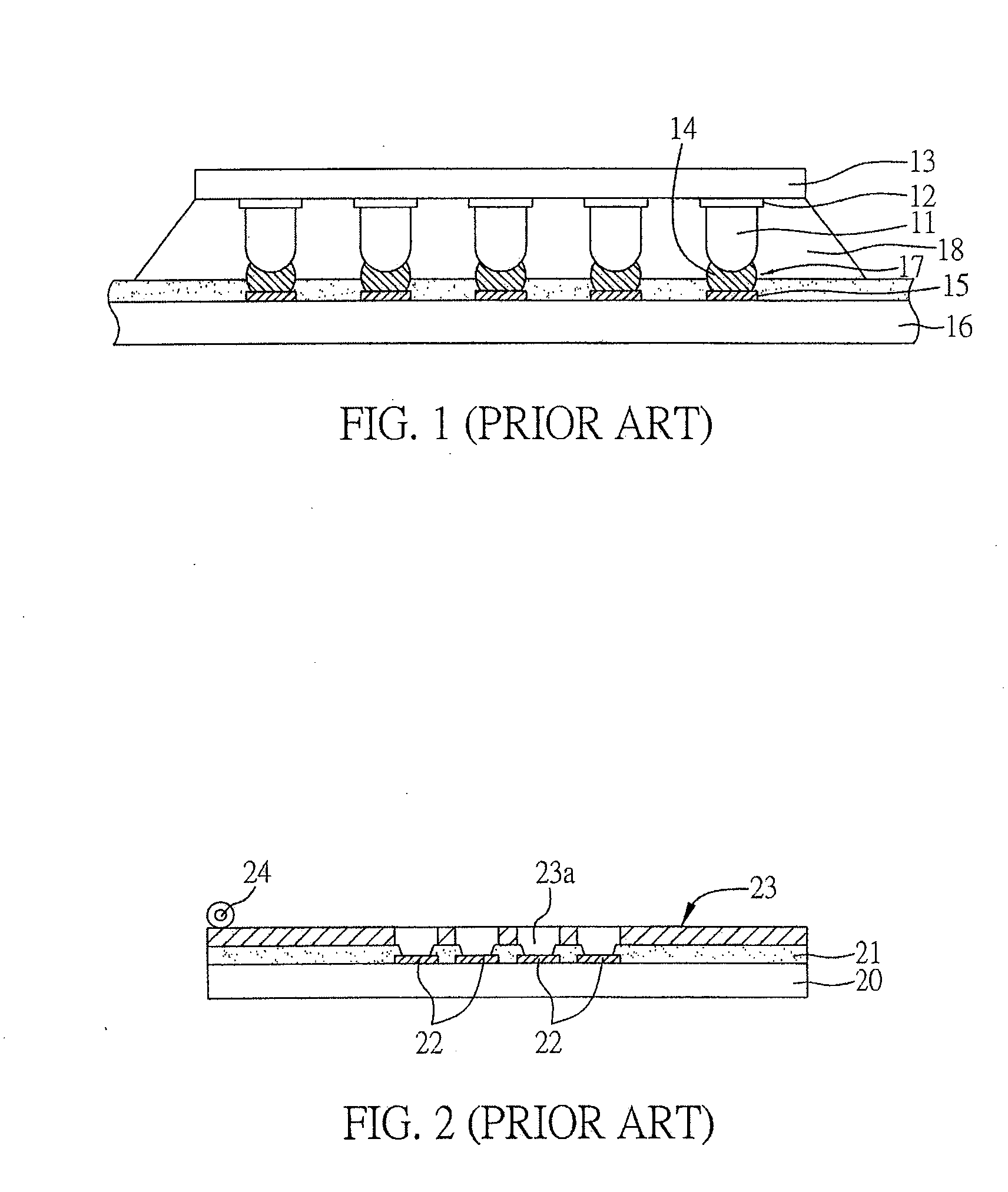Method for fabrication of a conductive bump structure of a circuit board
a technology of conductive bumps and circuit boards, which is applied in the direction of resist details, non-metallic protective coating applications, double resist layers, etc., can solve the problems of increasing the quantity of electrical connection pads on the carried components, unable to meet the demands for chip development, and shrinking the total area, so as to reduce achieve the effect of reducing material costs, fast electroplating speed, and reducing the difficulty of electroplating
- Summary
- Abstract
- Description
- Claims
- Application Information
AI Technical Summary
Benefits of technology
Problems solved by technology
Method used
Image
Examples
Embodiment Construction
[0028]The present invention relates generally to a method for fabricating conductive bump structure of a circuit board, and more particularly, to a conductive bump structure formed on an electrical connection pad of a circuit board for electrically connecting the circuit board to the external electronic component. The following description is presented to enable one of ordinary skill in the art to make and use the invention and is provided in the context of a patent application and its requirements. Various modifications to the preferred embodiments and the generic principles and features described herein will be readily apparent to those skilled in the art. Thus, the present invention is not intended to be limited to the embodiments shown, but is to be accorded the widest scope consistent with the principles and features described herein.
[0029]Proposed in the present invention can be more fully understood by reading the detailed description of the preferred embodiments. What needs ...
PUM
| Property | Measurement | Unit |
|---|---|---|
| conductive | aaaaa | aaaaa |
| insulating | aaaaa | aaaaa |
| electrical connectivity | aaaaa | aaaaa |
Abstract
Description
Claims
Application Information
 Login to View More
Login to View More - R&D
- Intellectual Property
- Life Sciences
- Materials
- Tech Scout
- Unparalleled Data Quality
- Higher Quality Content
- 60% Fewer Hallucinations
Browse by: Latest US Patents, China's latest patents, Technical Efficacy Thesaurus, Application Domain, Technology Topic, Popular Technical Reports.
© 2025 PatSnap. All rights reserved.Legal|Privacy policy|Modern Slavery Act Transparency Statement|Sitemap|About US| Contact US: help@patsnap.com



